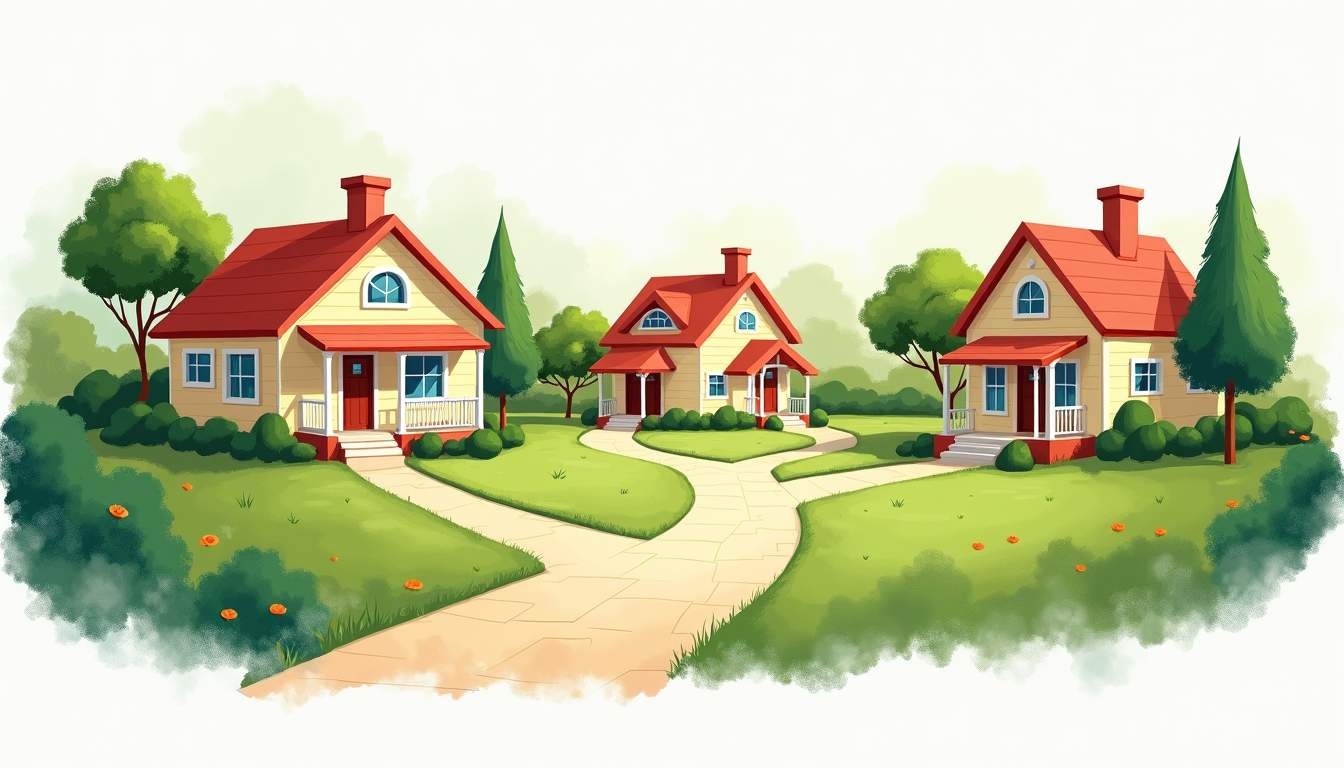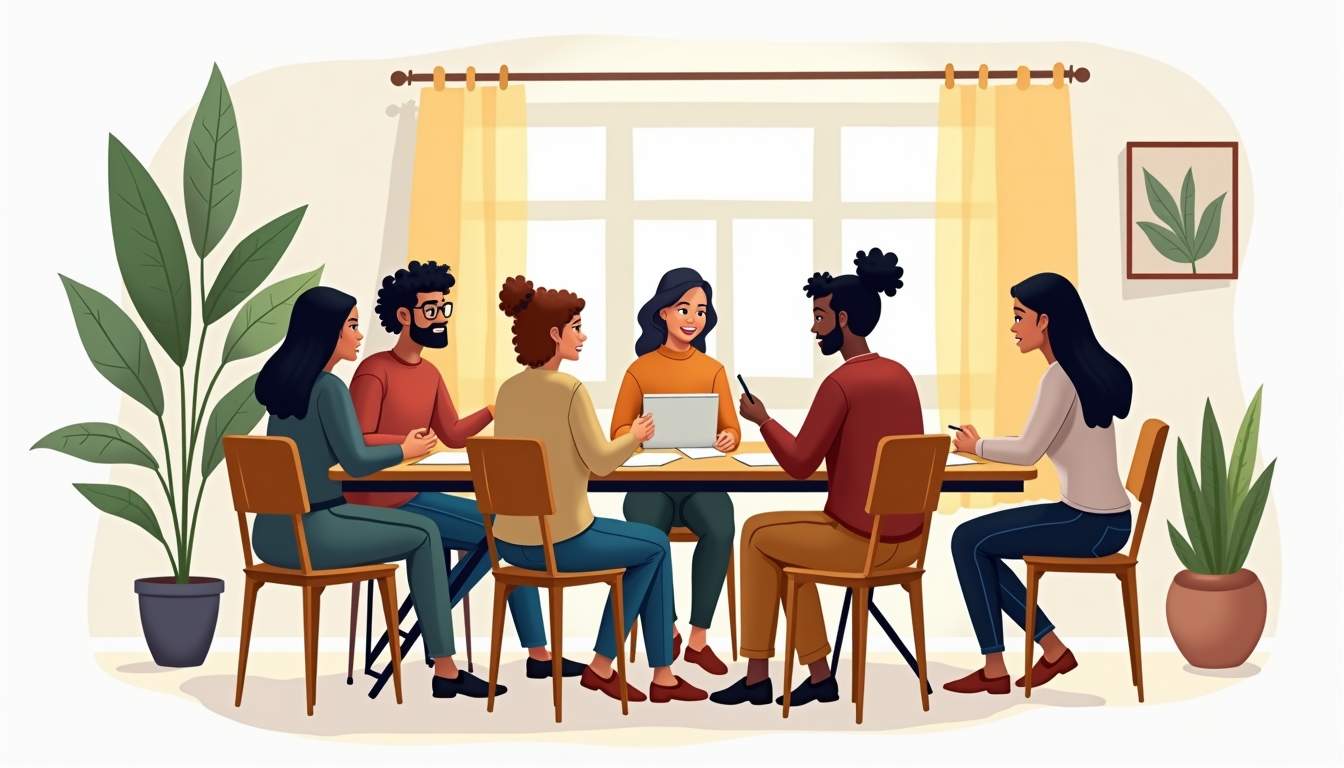
Tennessee National is more than a residential community; it is a carefully crafted social ecosystem where design, programming, and a shared sense of purpose transform a collection of houses into a neighborhood. From the layout of streets to the calendar of events, every element nudges people from polite acquaintanceship toward connection and mutual support. This article explores the strategies and features that make Tennessee National feel like a neighborhood rather than simply a place to live.
The physical layout of Tennessee National is deliberate in encouraging chance meetings and small interactions. Narrower streets, sidewalks that wind past front porches, and common green spaces create natural stopping points. When people walk their dogs, take evening strolls, or push strollers, they are likely to pause and chat. These built-in opportunities remove the friction that often keeps neighbors isolated.
Homes oriented toward the street with front porches and modest setbacks invite informal socializing. Front porches act as transitional spaces—more public than a backyard, yet still private enough for a relaxed conversation. This subtle architectural cue signals openness; residents often leave porch lights on, sit outside after dinner, or wave to passing neighbors, making it easier to form connections without feeling exposed.
Beyond the immediate streetscape, thoughtfully placed community amenities further facilitate interaction. Pocket parks, small playgrounds, and shaded benches provide inviting gathering spots for people of all ages. These spaces are designed not only for recreation but also as low-pressure environments where neighbors can strike up conversations, share local news, or arrange group activities. The landscaping uses native plants that attract local wildlife, giving an added point of interest and encouraging residents to linger and enjoy nature together.
Additionally, pedestrian pathways connect key areas within Tennessee National, encouraging residents to explore their neighborhood on foot rather than relying solely on vehicles. These paths often intersect at nodal points such as mail kiosks, community bulletin boards, or small art installations, which naturally draw people together. By weaving together the built and natural environments, the neighborhood fosters an organic rhythm of daily interactions that strengthen the social fabric over time.
A well-chosen set of amenities plays a major role in turning residents into neighbors. Tennessee National combines active and passive spaces: fitness centers, pools, dog parks, community gardens, and multipurpose clubhouses. These amenities are not only convenient but deliberately placed to be visible and accessible, creating hubs where neighbors naturally congregate.

Shared spaces also support cross-generational interaction. Parents with young children gather at playgrounds and splash pads, while older residents use walking trails and outdoor seating areas. Programs scheduled around these amenities—like morning yoga sessions by the pool or weekend garden plots—nudge people toward recurring interactions, which build familiarity and trust over time.
Events are the social glue of any neighborhood, and Tennessee National treats programming as a strategic tool. Regularly scheduled rituals—farmers markets, summer movie nights, holiday parades, and seasonal festivals—create a rhythm to community life. When people come to expect certain gatherings, attendance increases, and so do the chances for neighbors to meet repeatedly and form bonds.
Programming is designed with accessibility in mind. Events cater to different schedules and mobility levels: twilight concerts for working professionals, morning coffee meetups for remote workers, and accessible outings for seniors. Volunteer opportunities are woven into events, giving residents a sense of ownership and a structured way to contribute to the community’s social fabric.
Beyond big events, the community invests in small-scale social infrastructure that supports day-to-day connections. Book-sharing boxes, community bulletin boards, and neighborhood walking groups offer low-commitment ways for people to interact. These micro-infrastructure elements lower the barrier to participation, making it easier for newcomers and busy residents to become involved without a heavy time investment.
Another key element is the placement of informal meeting points: benches at trail intersections, shaded picnic tables near playgrounds, and coffee stations inside clubhouses. These attract casual conversations and foster a culture where pausing to talk is normal. Such design choices help normalize neighborliness as part of daily life rather than something reserved for special occasions.
First impressions shape long-term engagement. Tennessee National offers a structured onboarding process for new residents that goes beyond handing over keys. Welcome packets include maps of walking routes, schedules of recurring events, and introductions to neighborhood volunteer groups. New residents are invited to orientation mixers where they meet community leaders and other newcomers in a relaxed setting.
Mentor programs pair longer-term residents with newcomers for the first few months. These mentors share practical tips—best local coffee shops, preferred walking routes, and active clubs—while opening doors to social networks. This guided introduction helps reduce the awkwardness of joining an established community and accelerates social integration.
Strong neighborhood leadership is essential for sustained community life. Tennessee National encourages residents to take on leadership roles by providing small grants, meeting support, and organizational templates. Residents who lead interest groups, organize events, or run marathons for charity receive administrative help and publicity, lowering the cost of volunteering and enabling grassroots initiatives to flourish.

Leadership development workshops and periodic training sessions for event organizers strengthen local capacity. A culture of rotating leadership prevents burnout and ensures more voices shape community priorities. When residents feel empowered to create as well as participate, the neighborhood becomes more resilient and adaptive to changing needs.
Shared purpose transforms casual acquaintances into committed neighbors. Tennessee National incorporates volunteer and service opportunities into community life, from neighborhood cleanups and habitat restoration projects to partnerships with local schools and food banks. These activities connect residents across age groups and backgrounds around a common cause.
Service projects often culminate in social gatherings like potlucks or award ceremonies, where the tangible results of cooperation are celebrated. This cycle—act together, reflect together, and celebrate together—deepens relationships and nurtures a shared identity rooted in contribution rather than consumption.
Intentional inclusivity is a core value at Tennessee National. Events are planned with diverse populations in mind, and spaces are designed to accommodate varying physical abilities. Communications use multiple channels and languages where appropriate to ensure broad awareness of activities. Affordability is considered, with many events offered free or at low cost to avoid economic exclusion.
Community norms emphasize respect and civility, and conflict resolution resources are available for disputes. Everyone—from renters to long-term owners—is encouraged to participate, and efforts are made to welcome different household types, including single homeowners, extended families, and multigenerational households. Inclusion becomes a practice embedded in daily interactions rather than a slogan.
Technology amplifies community-building efforts at Tennessee National without replacing face-to-face interaction. A community app shares event calendars, volunteer opportunities, and neighborhood announcements. Social media groups supplement the app, providing platforms for informal exchanges and rapid coordination during events or emergencies.
Important to the approach is the balance between digital and physical. Online tools are used primarily to arrange and promote in-person activities, not as ends in themselves. The design of digital spaces mirrors the physical ones: photo albums of recent events, directories of local groups, and forums for ideas that can be turned into real-world gatherings. This hybrid use of technology strengthens rather than substitutes neighborly ties.
Success is measured through both qualitative and quantitative indicators. Attendance at recurring events, the number of active volunteer groups, use of shared amenities, and turnover rates provide hard data. Equally important are softer signs: spontaneous street games, shared holiday decorations, neighbors checking in during storms, and informal child-care swaps. These behaviors signal that residents have moved beyond proximity to a genuine sense of community.
Periodic surveys and listening sessions help community managers and resident leaders refine programs. Feedback loops ensure that offerings evolve with resident needs. The ultimate metric is resilience: when the community faces challenges—natural events, economic changes, or demographic shifts—support networks and local leadership are able to respond effectively.
Concrete stories often capture the intangible effects of community design. A family new to the area finds playdates at the neighborhood park within weeks, turning casual greetings into trusted friendships. An elderly resident who once felt isolated discovers a weekly walking group and becomes an active volunteer in the community garden. A block organizes a spontaneous potluck after noticing a new neighbor unpacking late at night, transforming a moment of potential loneliness into long-term connection.

Such narratives are not exceptional but indicative of how intentional design and programming convert daily life into a tapestry of interactions. Repeated small gestures—sharing tools, borrowing a cup of sugar, offering a ride—accumulate into a culture where neighbors reliably look out for one another.
Tennessee National offers lessons that can be applied more broadly. Begin with a layout and amenities that promote visibility and interaction, schedule recurring events that build shared rituals, and invest in onboarding and leadership development to accelerate social integration. Balance technology with in-person opportunities and design inclusion into the fabric of programming and space.
Perhaps most importantly, nurturing neighborliness requires patience and persistence. Relationships cannot be manufactured overnight, but small, consistent practices and a commitment to shared life can transform any housing development into a neighborhood. When residents are given the tools and the invitation to participate, the transition from residents to neighbors becomes not only possible but inevitable.
Tennessee National demonstrates that community is an outcome of choices—architectural, social, and managerial. By prioritizing encounters, supporting volunteerism, and creating rituals that invite repeated connection, the community becomes a place where residents are known, relied upon, and invested in one another’s well-being. That is the essence of turning residents into neighbors.
Discover how Tennessee National transforms neighbors into lifelong friends through thoughtful design, shared experiences, and a vibrant social fabric. With luxury amenities like a Greg Norman Signature Golf Course, private marina, and over 20 member-exclusive options, our gated community offers more than a home—it offers a place to belong. Whether you seek a move-in ready residence or a custom build, now is the time to experience resort-style living and meaningful connections. Schedule your private tour today and start turning your new house into a welcoming neighborhood.